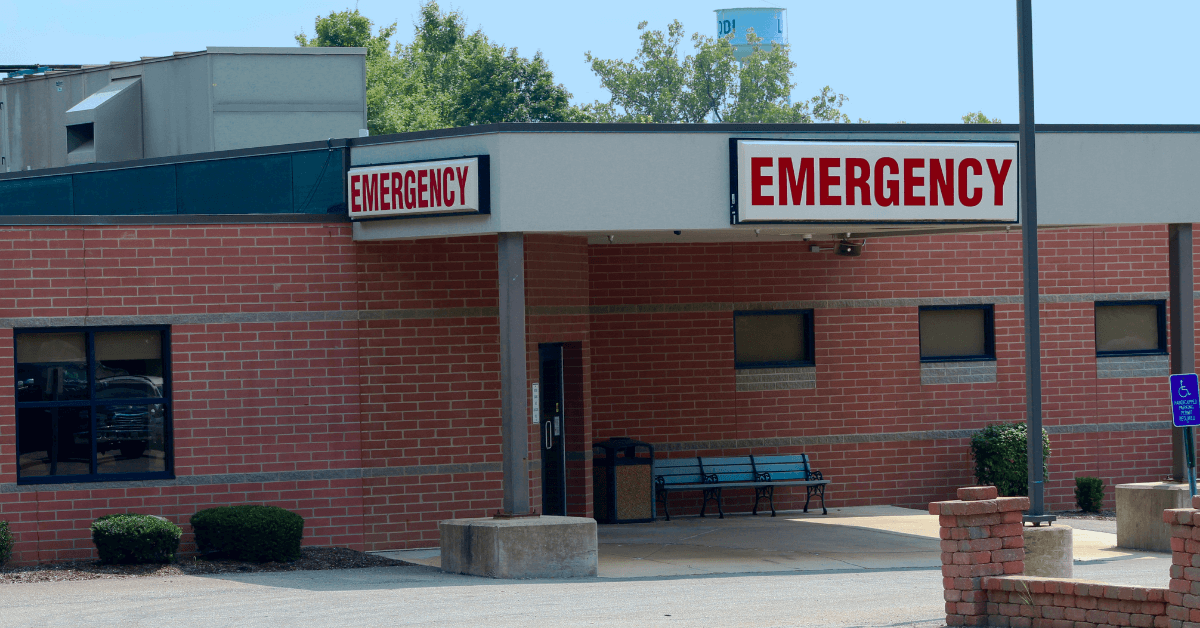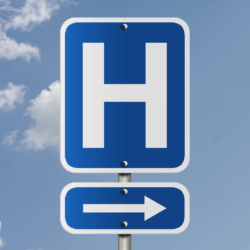February 8, 2021

We Have an Immediate Opening for Someone Who Can Re-Invent Rural Healthcare
I’ve been covering healthcare for nearly 40 years now as a reporter, editor and writer, and there are a handful of story lines that have spanned all four decades. Among those that never go away:
- Emergency rooms always are overcrowded with people with nonemergent conditions.
- Doctors always are thinking about quitting or retiring early because burdensome regulations and red tape prevent them from practicing medicine the way they should.
- Nurses always are overworked and underpaid. (BTW, they are.)
- Drug prices always are too high.
- Hospitals and health systems always are on thin ice financially because of reimbursement pressures from health insurers and other payers.
- A subset of the hospital and health system story line is the plight of the rural hospital. Individually and collectively, rural hospitals always are on the brink of collapse and closing forever, leaving thousands of rural Americans without access to care.
I admittedly have become desensitized to the plight of the rural hospital story line because I’ve heard it so many times.
More Than 800 Rural Hospitals at Risk
For example, a healthcare advocacy organization called the Center for Healthcare Quality and Payment Reform released a 178-page report last September that said more than 500 rural hospitals are at risk of immediate closure because of “persistent financial losses” and “low or non-existent financial reserves.” More than 300 other rural hospitals are at high risk of closure because of “low financial reserves” and “high dependence on non-patient service revenue,” the report said.
The report Saving Rural Hospitals and Sustaining Rural Healthcare also included a list of potential rural hospital closings by state. For instance, it said 82 of the 147 rural hospitals in Texas are at immediate or high risk of closing. In Kansas it’s 76 out of 105. In Connecticut, it’s three out of three.
Scary stuff, especially for people who depend on those rural hospitals for care. Yet, I don’t recall hearing about the report or reading any coverage of it in the consumer or healthcare trade press. It wasn’t until a colleague of mine mentioned a story he saw in Becker’s Hospital Review that ran the state-by-state list from the report. That story came out on Jan. 22, or more than four months after the report came out.
So maybe I’m not the only one who’s become desensitized to the failing rural hospital story line? I guess it would take a lot to get my attention or the attention of others who have heard it over and over again.
That is, until this new report from the Government Accountability Office report came out in December. What makes this GAO report different, or at least different to me, is that it looks at the rural hospital closing issue not from the hospital point of view but from the customer’s point of view. The 40-page report digs deep into how rural hospital closings affected patients’ access to care.
Traveling Farther for the Same Care

The GAO said 101 rural hospitals closed from January 2013 through February 2020. The GAO compared patients’ access to a detailed list of services in 2012, or a year before their hospital closed, to the closest open hospital that offered the same service in 2018. The GAO calculated the median distance in miles that patients had to travel for a particular service in 2012 and did the same for 2018.
For instance, in 2012, a patient who needed general inpatient care traveled a median of 3.4 miles to get it. By 2018, that distance jumped to 23.9 miles, or seven times farther.
The 10 biggest increases in terms of median miles to travel for specific services, according to the GAO report, were:
- 77.1 miles for transplant services (2.1 miles to 79.2 miles)
- 75.3 miles for pediatric intensive care (2.9 miles to 78.2 miles)
- 45.6 miles for optometry (2.5 miles to 48.1 miles)
- 44.3 miles for forensic psychiatry services (2.9 miles to 47.2 miles)
- 42.3 miles for child or adolescent psychiatry services (4.0 miles to 46.2 miles)
- 40.8 miles for outpatient psychiatric services (5.0 miles to 45.7 miles)
- 40.8 miles for audiology (3.8 miles to 44.6 miles)
- 39.1 for urgent care (3.1 miles to 42.2miles)
- 39.1 miles for alcohol or substance abuse care (5.5 miles to 44.6 miles)
- 36.5 miles for a cardiac catheterization lab (4.5 miles to 41.1 miles)
- 36.5 miles for geriatric psychiatric services (3.4 miles to 39.9 miles)
Now, driving 77.1 miles for a kidney transplant may not seem far and may be worth the trip if you’ve been waiting a while for a new kidney. But if your child is critically injured, you have debilitating chest pain or you’re seriously depressed and contemplating suicide, 75.3 miles, 36.5 miles and 40.8 miles, respectively, might as well be a million miles.
Fewer Doctors for Sicker Patients
When rural hospitals closed, they took doctors with them, according to the GAO analysis. In counties where hospitals closed, the number of physicians per 100,000 residents dropped to 59.7 in 2017 from 71.2 in 2012. Physician assistants and advanced practice registered nurses replaced them—to 14.3 per 100,000 residents from 10.8 for PAs and to 110.8 per 100,000 residents from 68.7 for APRNs.
When rural hospitals shut down, the population got sicker. In 2017, Medicare beneficiaries in counties where hospitals closed had higher percentages of 10 different types of chronic diseases, including high blood pressure and diabetes, than beneficiaries in counties where no hospitals closed, the GAO said.
Clearly, from the customer’s point of view, losing a rural hospital to closure is a really bad deal, according to the GAO report. You’re less healthy, and your access to the medical services and the physicians that you need to get and stay healthy is seriously diminished.
What’s a person living in a rural area to do?
A New Payment System for Rural Healthcare

The September report from the Center for Healthcare Quality and Payment Reform recommended the creation of a new “Patient-Centered Payment System” for rural hospitals and clinics as the answer. The five parts of the new payment system would be:
- Standby capacity payments to support the fixed costs of essential services
- Service-based fees for diagnostic and treatment services based on marginal costs
- Patient-based payments for primary-care management
- Accountability for quality and spending
- Value-based cost-sharing for patients
If you need more details on how each of the five parts would work, I encourage you to read the report.
I like the idea of aligning financial incentives in a reimbursement system with what needs to happen to keep rural hospitals open and maintain patients’ access to care. At the same time, I think private health plans, government insurance programs and other payers will see this as another government subsidy to prop up failing businesses. Think farm subsidies and corporate bailouts. In the immediate post-pandemic economy, I don’t see an appetite for that type of relief.
Others have predicted a big wave of mergers, acquisitions and other forms of consolidation as the way out of the mess. That comes with its own problems like higher prices with no commensurate quality or service improvements.
Blueprints for Rural Health Innovation
A better idea is market-based innovation. To me, the CHQPR and GAO reports combined are blueprints for building a more effective rural healthcare system using new care delivery models. The first tells you where to build. The second tells you what to build.
It’s a big market waiting for startups, entrepreneurs, disruptors and other nontraditional healthcare players to attack with customer-focused solutions that emphasize access, affordability, convenience and immediacy.
It’s either that or raise the speed limit to 90 miles per hour and give everyone a fast car.
Thanks for reading.
Stay home. Stay safe. Stay alive. The vaccine is coming. Really. Eventually.





